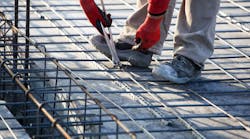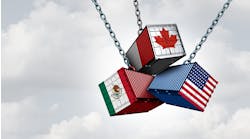Why the $350 Billion Transportation Infrastructure Bill Falls Short
The House and Senate has approved a 5-year, $305 billion transportation infrastructure bill to address the nation’s deteriorating roads and bridges.
But I'm not so sure that's enough.
The bill includes $207.4 billion for transportation projects and $48.7 billion for mass transit, as well as $8 billion for Amtrak, $1 billion for highway safety programs, and a subsidy for the farm states that reinstated their private crop insurance.
In addition, the bill reinstates the Export–Import Bank, for which the three biggest beneficiaries -- General Electric, Boeing and Caterpillar -- had lobbied, threatening layoffs.
The bill, however, still fails to address a chronic shortfall in financing for the Federal Highway Trust Fund, which pays for such projects, and has been the subject of a fierce long-running disagreement over federal tax policy. In fact, how to pay for this program remains vague and is still being debated.
Further, the bill appropriated no money for water and sewer problems or for the electrical grid. Water contamination causes 5,500 citizens to get sick every year, and there are 240,000 water main breaks every year. Meanwhile, the electrical demand has exceeded the building of transmission lines by 25% per year.
Like it or not we are in the middle of an infrastructure collapse and we are going to have to pay for it by either raising taxes or deficit spending –- or we will pay for it through emergency funding, which is also deficit spending, that is estimated to be $189 billion per year.
To make real progress and create jobs we need a minimum of $415 billion per year.
The Truth About America's Crumbling Infrastructure
For more than three decades, there has been a debate about investing in rebuilding our infrastructure to create new jobs. But just what is infrastructure and how much of it needs to be repaired or replaced?
The Disintegrating Highways, Bridges & Waterways
The collapse of the I-35 Mississippi River Bridge in Minnesota on August 1, 2007, and of the I-5 Skagit River Bridge in the State of Washington on May 23, 2013, are not-so-subtle reminders of our highway and bridge problems.
According to the Federal Highway Administration’s Bridge Inventory, 146,633 out of 604,474 bridges in the United States are structurally deficient or functionally obsolete, amounting to a whopping 24.3% of all bridges in the country.
The FHA predicts that over the next 30 years, the number of trucks on the road will grow by 60% to keep pace with demand, which in turn will translate into more stop-and-go conditions.
How bad will it get? Today, for the trucking industry alone, highway bottlenecks cause 243 million hours of delay each year, at a cost of $7.8 billion. Now what happens in 5, 10 or 20 years if we don’t change course?
The Department of Transportation is currently predicting an 88% increase in rail freight demand by 2035, but we certainly haven’t allocated enough national resources to add 88% capacity. Though efficient and highly functional for many long-hauls, rail is expensive to build and maintain, a fact that constrains both rail companies and the businesses that rely on them to move large quantities of goods.
The American Society of Civil Engineers (ASCE) published a study that says it is going to take at least $220 billion per year for 30 years to repair and upgrade America’s highway and bridge systems. The study also makes the point that under investment in the system will cost households and businesses $130 billion per year in emergency repairs, vehicle operating costs, and travel delays.
The Aging, Leaky Water and Sewer Systems
Despite how critical drinking water and sanitation are for public health, many of these underground systems have reached or exceeded their operational life and need to be repaired or replaced. Every year, thousands of water pipe or sewer line breaks cost $3 billion in emergency repairs. Many of these systems were installed in larger cities as long as 100 years ago and have been poorly maintained.
According to the Center for American Progress, there are 240,000 water main breaks per year, and “as much as 20% to 25% of the treated water that enters the distribution system is lost to leakage.”
After clean water is used by consumers and businesses, it must be cleaned and treated as wastewater in 14,780 waste water treatment plants and discharged through 800,000 miles of sewer pipes. The capacity of this system has been exceeded and “every year there are 75,000 overflows in the U.S., discharging approximately 900 billion gallons of untreated sewage into lakes, rivers, and streams.”
The problems with sewer pipes are twofold. First, the U.S. Geological Survey has found that leaking sewer pipes are allowing intestinal viruses to get into the nation's drinking water. Second, even though nobody really knows how many leaks there are in the underground system of sewer lines, it is estimated that three to ten billion gallons of raw sewage leak every year from cracks in pipes, improper connections, accidents, and clogs from debris.
The EPA estimates that it will cost between $331 to $450 billion to repair or replace the nation’s sewer system over a period of 20 years. Sewer pipes represent about 75% of the capital needs.
A report by the American Water Works Association estimates it will take $1 trillion dollars to repair or replace the drinking water system over 25 years.
The Overwhelmed Electrical Grid
Just about everyone knows that the U.S. has an electrical grid problem, thanks to the media coverage of blackouts that seem to happen with regularity. But the reasons for the blackouts are complicated and the solutions are expensive.
The primary problem is that electrical demand has exceeded the building of transmission lines by 25% per year, and the demand is expected to double over the next 20 years.
Another problem is that most of the nation’s 300,000 mile long power grid is 100 years old. The original manufacturers of the parts for these systems are no longer in business, so repair parts are a big problem.
But perhaps the biggest problem of the electrical grid is the original design. Large sections of the grid are tied together by electrical interlocks to protect the equipment. If one part of the system breaks or is overloaded, it will begin shutting itself down to protect the rest of the grid. This is called a “cascading failure” because it progresses through the system like dominoes falling.
A good example was the 2003 Northeast blackout on August 14, 2003, which shut down electricity to 10 million people in Ontario and 45 million people in the U.S. (most of the N.E. region of the U.S.). The problem was started by a software bug in the alarm system at the control room of the First Energy Corporation of Ohio which then led to a cascading failure.
The answer is to upgrade and replace the old analog grid with a digital “smart and self-healing grid” by building microprocessors that would be integrated into every switch, circuit breaker, transformer, and other component.
The power outages are costing us $49 billion a year, but it will cost $338 to $476 billion over a period of twenty years to build a digital smart grid system.
The American Society of Engineers in their 2013 Report Card says upgrading or repairing all of this infrastructure will cost $3.6 trillion.
The Infrastructure Investment-Jobs Debate
The Republican strategy is to reduce government spending. However, regardless of which political party you support, the fact is that the economy has not recovered from the Great Recession, and we simply are not creating enough jobs.
Since the year 2000, the average GDP growth has been a lackluster 1.8%, and since the recession ended we have only created an average of 150,000 jobs per month. In addition, capital investment has been declining because the aggregate demand of the consumers is not high enough to justify investment.
Austerity is not going to get the country back to growth or job creation. Just as in the Great Depression, we can’t count on business to create jobs and may have to consider government investment.
I believe that the best investment opportunity we have right now that would create manufacturing and construction jobs, increase tax revenue, and offer a return on investment, is to invest in repairing and replacing America’s infrastructure. Unless we make this investment, America will not be competitive with foreign competitors.
It is realistic to say that investment in infrastructure will affect every citizen in the U.S. Whether it is missing a delivery promise because of a highway jam, losing water pressure in a food plant, losing electricity during a blackout, or being fined by a government agency; infrastructure problems will continue to increase business costs and make business less competitive. They will also increase consumer costs through user fees and rising service bills.
In his excellent book “American Made,” Dan Dimicco says, “Those trillions would repair existing infrastructure, some of which is a half a century old or older, as well as buy additional infrastructure capacity to stay competitive internationally. The need for a growing country of 314 million are vast. The infrastructure we build now would need to accommodate a population estimated to reach 350 million by 2030 and 400 million by 2050, according to the National Census Population Projections. We need the infrastructure we need the jobs, we can have both.”
Dan’s book also features the following chart which specifies the number of jobs that could be created for an investment of $415 billion.
Despite the ongoing criticism of government spending, there is a lot of proof that federal spending on infrastructure can create good returns. "Mark Sandi, chief economist at Moody’s Analytics, found in 2011 found that new federal spending for infrastructure improvements to highways and public schools would generate $1.44 of economic activity for each $1.00 spent.”
So for $415 billion we could begin repairing the nation’s infrastructure and create 10 million jobs.
On the other hand, continuing to do nothing will cost us $182 billion per year in emergency repairs (43% of the investment).
Addressing the Fear of the Growing Federal Deficit
I know that citizens are worried about the federal deficit and deficit spending. But we financed four tax cuts, two wars, and the bailout of the big banks with deficit spending and got very little in return. A $415 billion investment repairs our infrastructure, helps the country and every citizen, and creates jobs.
Our current strategy seems to be to use our limited resources to react when the bridge falls, the water main explodes, or the sewer overflow dumps raw sewage into the city’s river -– and then depend on our emergency forces to get us out of the jam with around-the-clock TV coverage.
However, dealing with these kinds of problems during an emergency is the most expensive solution and most often there is no budget and the local government has to rely on deficit spending. This is like a person with a cut or abrasion deciding to not go to the doctor where the service is a hundred dollars an hour and then getting blood poisoning and having to go to the hospital emergency room for thousands of dollars an hour.
But perhaps we should be happy we got $305 billion from this dysfunctional Congress.
What do you think?





